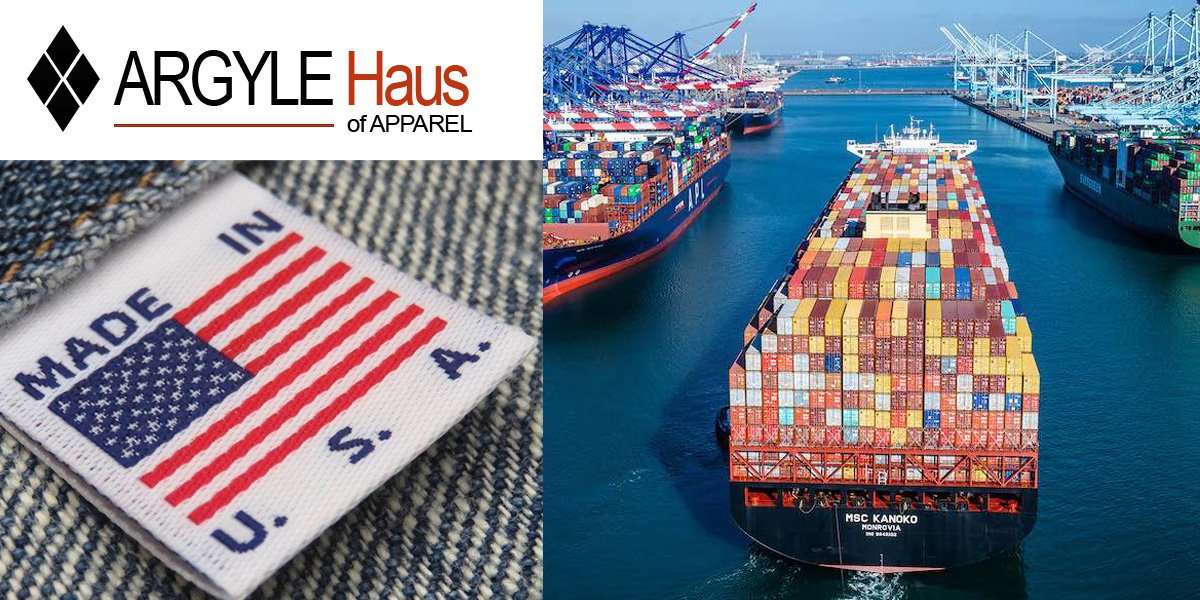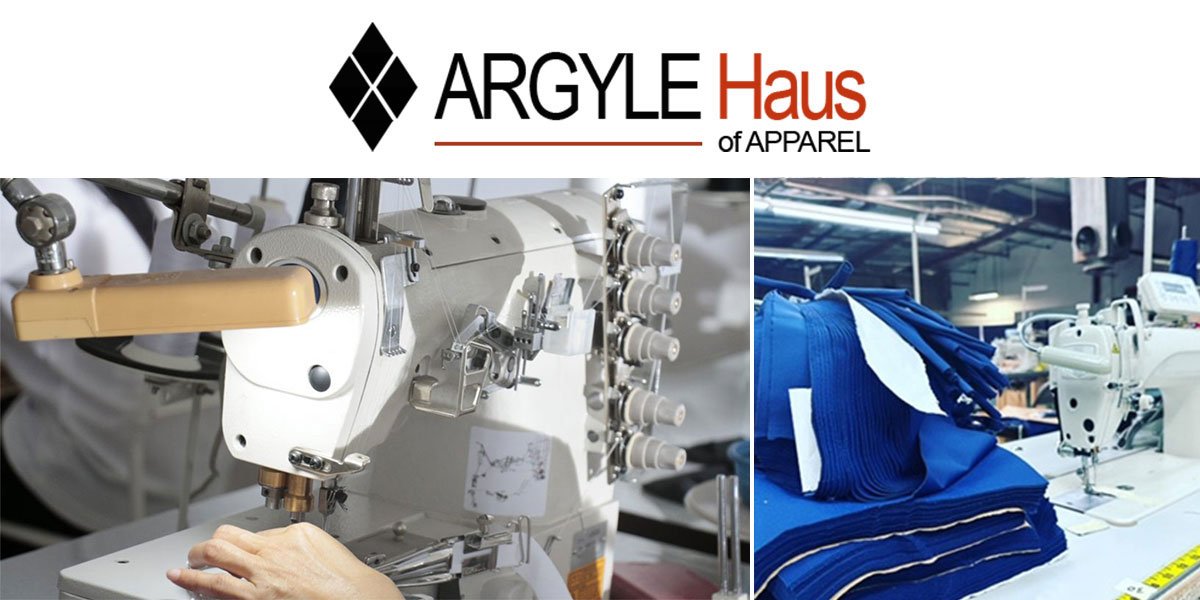The fashion industry is booming, but it’s not for US Clothing Manufactures designers. Only a small fraction of American clothing manufacturers are making their clothing in the USA and most companies get their materials from overseas.
Hence, one of the most important objectives for any professional in the fashion sector should be locating reputable US clothing Manufacturers in Los Angeles, CA, for example. But why should you invest in US Clothing Manufactures within the United States rather than outsourcing to another country? A glance at the statistics on US Clothing Manufactures services and consumption in the United States will give you some perspective.
Are you aware that the annual cost of clothing for an average family in the United States is $1,800? Yet, the United States is still the world’s largest importer of fashion apparel, with almost 40% of US Clothing Manufactures goods on American shelves sourced from China. A good fraction of American income is spent outside of its borders, and little or no production occurs within them; this means that many jobs could be at risk if brands don’t start taking notice soon enough!
But has it always been this way?
Of course, this wasn’t always the case. It’s a much more recent phenomenon than you would care to believe. The history of US Clothing Manufactures is one that most Americans are unaware of. For centuries, the country was known for producing US Clothing Manufactures on our shores with pride and loyalty to its customers. However, this practice has become rarer over time as other countries have taken up these jobs, leaving fewer options available regarding what kind or brand you want.
So, let’s look at the history of how America’s clothing line manufacturing sector has gone offshore and why it affects us as a nation.
A brief history of clothing manufacturers in North America

The clothing sector in the United States has a long, illustrious history. However, the beginning of clothing production in countries like the United States was modest. The stores were labor-intensive under the supervision of a designated production manager, required little capital investment, and the technology involved was simple.
The apparel production process was quite basic since it was completed with the help of dedicated sewing modular, under the supervision of a personal production manager. In addition, cutting and pressing were initially done with scissors and hand irons until electric cutters, and steam presses came along. However, it did not prevent some ingenious minds from recognizing the potential in this market and investing their ideas and resources in the fashion design house.
It was not until the Industrial Revolution that clothing production began to take off in the United States. The introduction of new technologies and machines made it possible to mass-produce top clothing top clothing manufacturing companies in the world quickly and efficiently. This, combined with a growing demand for clothes, resulted in a boom in the clothing industry. Businesses flourished, and the United States became a leading clothing producer in the global market.

One of the first people to see the potential in the clothing business was Levi Strauss. In 1853, he came to San Francisco from New York with a supply of denim fabric to sell. There was a need for sturdy work pants in the California Gold Rush, and Levi Strauss saw an opportunity. He teamed up with a local tailor, Jacob Davis, to create the first pair of blue jeans. The pants were a hit, and Levi’s brand was born.
Together with his production partner, on May 20, 1873, Levi Strauss patented putting rivets in pants pockets, which made them much more robust. This apparel development was the start of one of the most famous clothing globally and, most importantly, native to the United States.
The move towards clothing outsourcing in the 1980s

Most developed nations were self-sufficient in clothing and apparel imports until the mid-20th century. However, the United States apparel industry has undergone drastic changes since then, as the manufacturing process and the very definition of “clothing” has changed beyond recognition.
The trend started in the 1950s when Japan and Hong Kong began to export some typical apparel styles to the United States. Imports increased in 1965 when the customs legislation was modified to allow components to be manufactured offshore and returned to the United States with duties levied only on the “value-added” portion of the item. Although the US government tried to restrict imports from other nations, it appeared too late, as some lesser-developed Asian countries began concentrating on increasing export levels.
In Asiatic countries, labor is cheap, and production can easily be mass. However, because these Asian states have a comparative advantage in producing low-capitalized manufactures such as clothing with an abundance of supply from their citizens’ willingness to work for little pay, US Clothing Manufactures in the United States did not stand a chance. These countries could expand their women’s clothing manufacturers USA export and other home goods in a short time.
Clothing Manufacturers For Startups In USA
Despite competition from these lower-income countries, US industrial output climbed in the 1970s and remained stable until the 1980s, when a steep decline began. People who worked in US Clothing Manufactures saw their ranks plummet, and there were fewer than 400,000 production workers in the sector, as opposed to 1 million in the 1960s.
This decline was caused by competition from cheaper imports, particularly from Asia, and increased productivity. The downturn of manufacturing in the United States has had far-reaching consequences, not just for workers but for the economy as a whole. For example, the loss of manufacturing jobs has been a significant factor in the rise of income inequality in the United States. As manufacturing jobs have disappeared, many workers have been forced into lower-paying service sector jobs.
The Brand Benefits of On Shore Clothing Manufactures

The United States lost ground in the textile industry as countries like China and India expanded their production. In 2009, textile manufacturing in the United States was just a fraction of what peaked in the early 1990s. According to a study from 2020, the tide began to turn in the 2010s.
From 2010 to 2020, roughly 1 million US Clothing Manufactures jobs were returned to the United States. Even though the apparel sector grew by 5 percent in employment, this was a welcome development for the US Clothing Manufactures industry.
The dramatic transformation that occurred during the 2010s is well suited to the notion that American businesses were beginning to evaluate the benefits and drawbacks of offshore production. The political and economic developments of the past decade have been shaped in part by the rise of China as a manufacturing powerhouse, which has resulted in significant changes in American businesses’ supply chains. The 2010s will go down in history as a decade of profound change and transformation in the American economy.
Some of the concerns evaluated by these garment US Clothing Manufactures industries included: quality control concerns, increased shipping costs, fair trade, and labor issues in other countries, and concern over a firm’s carbon footprint and public image when it comes to sustainability. When it came to outsourcing production, most of these businesses were apprehensive about these salient points, which resulted in the return of manufacturing work onshore.
How COVID-19 Changed the Shipping Situation
The COVID-19 pandemic was a step in the right direction for US Clothing Manufactures industry. The global pandemic paused the world, leading to America’s local companies and small brands establishing a foot in the door alongside the big entertainers in the fashion world. These small companies saw increased visitors and even more sales, which circulated back within the country. The pandemic saw local production with shorter supply chains and fewer people handling merchandise, which led to increased efficiency! This is how a terrible outbreak of the pandemic created something beneficial in the US clothing manufacturing sector:
As soon as the pandemic initially swept the globe in 2020, China rose to the occasion and produced roughly half of the world’s disposable masks. But this was not going to go on for long! COVID-19 later became a worldwide emergency, necessitating the use of face masks and prompting countries to place restrictions on export. Unfortunately, this resulted in shortages of masks and raw materials.
This political and health crisis dawned on the United States as it hadn’t in years! It made the United States aware that we can’t just rely on China. The ‘Made in America’ slogan re-surfaced and regained its popularity, especially for protective gear, which increased by 60 percent.
This movement also significantly influenced both shipping and import in the United States. According to research, the decrease in ship visits during the Coronavirus pandemic and continuing trade conflicts between the United States and China caused a 17.9 percent year-over-year drop in imports at the Port of Long Beach in February 2020. As a result of these changes, the United States was compelled to pay greater attention to onshore apparel production.
The phrase “made in the USA” re-entered common usage, and 2020 saw a spike in popularity for American-made consumer goods, which became increasingly popular. Consumer surveys have shown that over 90% of consumers have a favorable or somewhat favorable impression of “Made in USA” products.
The Design Benefits of On Shore US Clothing Manufacture
The traditional practice has been locating manufacturing plants abroad to save labor and production expenses, but this is no longer cost-effective. The costs of shipping products, materials, and components worldwide have exploded in recent years, and it would be simpler to manufacture in the United States.
Lower Shipping Costs
When you decide to keep your US Clothing Manufactures, you’ll save money on inbound and outbound delivery and shipping expenses. The costs of importing items from other countries may be high. Still, shipping domestically offers a broader range of transportation options and longer delivery windows, saving you money.
Utilizing U.S. shipping vendors means you’ll support the national economy and spend far less on shipment insurance, jet or ocean liner fuel, international taxes, customs expenses, and other costs. Typically, manufacturing in the United States is a more sustainable option for your US Clothing Manufactures brand.
Finally, keeping shipping costs low allows a US Clothing Manufactures to lower product prices by eliminating overhead. Customers are more likely to buy again and again if the price is reasonable. You’ll be doing your brand a whole world of good by keeping manufacturing onshore in the United States.
Local quality control
You will be able to control the manufacturing process if you’re closer to your production facility, allowing you to guarantee that all goods fulfill defined requirements and specifications.
Furthermore, you may be more confident that all materials utilized in your factory meet safety and quality criteria, allowing you to rest assured that you have the finest material on hand to create your product.
North American Materials Sourcing
When it comes to the fashion business, American-made fabrics are often overlooked in favor of European imports. However, there are many high-quality fabrics produced right here in the USA. By sourcing your materials from North America, you can help reduce your carbon footprint and support the local economy.
There are almost 110,000 textile factories in the United States. Fabrics produced range from cotton, wool, silk, and other natural fibers to various synthetic fabrics. There are numerous American-made fabrics to pick from among designer wholesale US Clothing Manufactures firms.
Why You Should Design and US Clothing Manufactures
Even though the US Clothing Manufacture sector in America is still hurting, it is outperforming other advanced countries. Quality is essential, and many individuals who want to purchase a US-made product often do so even though the price may be higher than a similar non-US custom-made garment. This is because they trust in the quality of workmanship that often goes into products made in America. Customers are concerned about their carbon footprint and the economic impact of offshore manufacturing.
Top US Clothing Manufactures
US Clothing Manufactures in Downtown Los Angeles, such as ARGYLE Haus of Apparel, only sell high-quality, American-made apparel to outlet shops. ARGYLE Haus of Apparel understands the latest trends and what consumers truly want – excellent quality and care for the American socio-economic prosperity.
In this era when the “Made in America” movement is once again on the rise, top apparel manufacturers should create and manufacture products in the United States, where quality control and carbon footprint are given importance.
Contact ARGYLE Haus Of Apparel
Do you want your US Clothing Manufactures garments designed or US Clothing Manufactures? Then, ARGYLE Haus of Apparel is the best choice for you! ARGYLE Haus, located in Los Angeles, CA, is a fashion line that produces high-quality US Clothing Manufactures using only the finest materials sourced in the United States. We can provide 100% quality control on all of our productions because we have our manufacturing facility. Contact us today for a free consultation!






